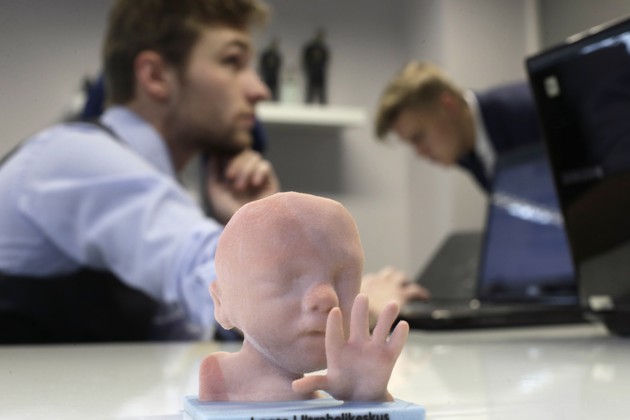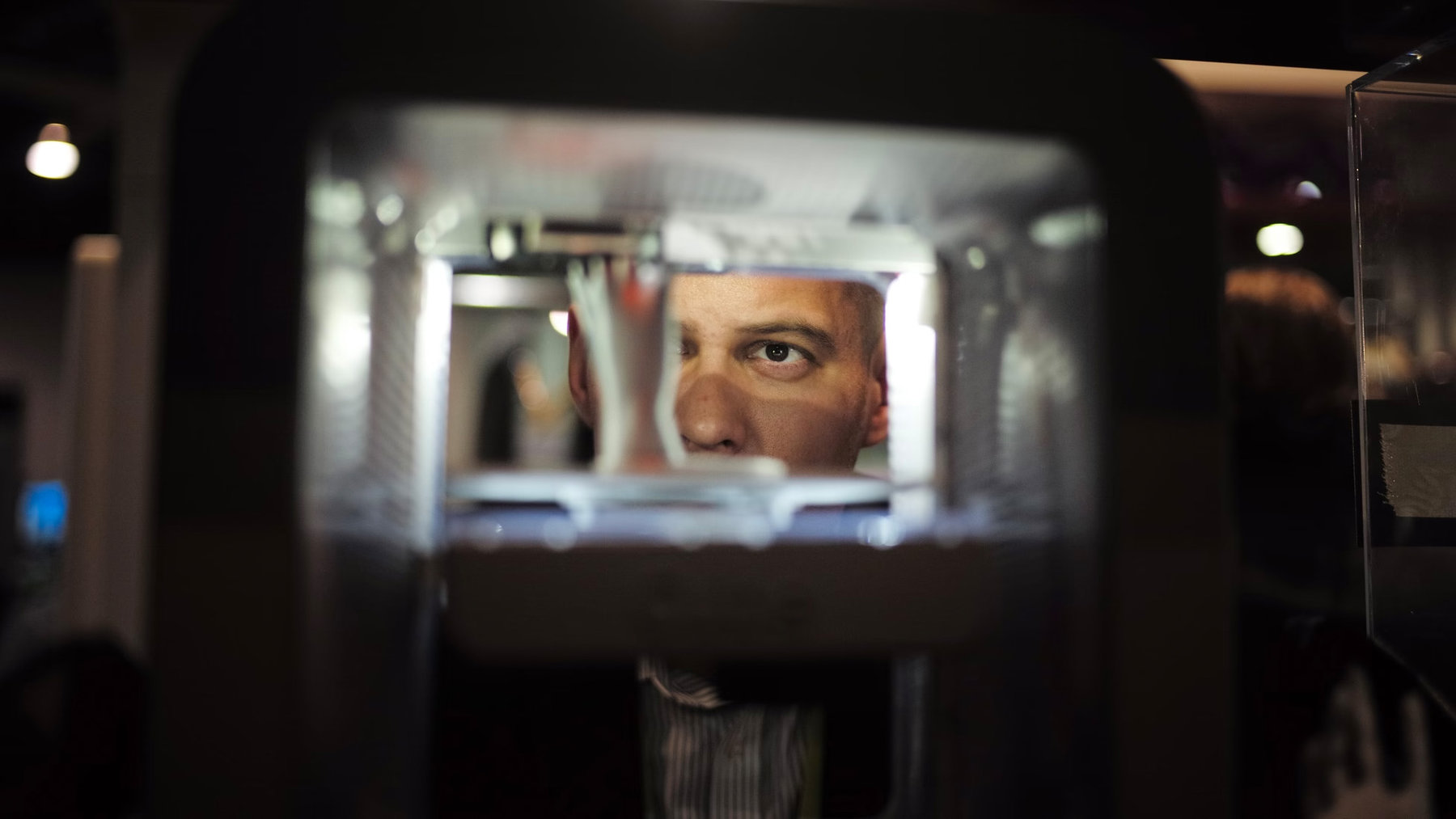And all the panelists agreed on the centrality of easily accessible 3-D printing technology, the rapid evolution of which is already sparking revolutionary thinking in synthetic biology (according to the futurist Jamais Cascio), meaning that the printing of human body parts and food may be just around the corner. These rapid changes in 3-D printing are what give rise to many of the challenges and dilemmas the CWA panelists spent time considering.
The consensus answer was that the emphasis should be on collaboration (learning with others, working with others—both keys to much of the advancement of the maker culture), learning how to think (specific subject matter is less important, with an important exception noted below), and being able to think in a systemic way (seeing how things fit together).
For young kids, the panelists said, the goal should be to get them started early. Will O’Brien, a tech entrepreneur, noted that he got into computers very early. His father worked at IBM, so computers were a family preoccupation. When O’Brien was 10 years old, his brother was in college, writing programs in BASIC. So, Will started to write in BASIC, too—mostly making computer games. That early influence proved important, as O’Brien went on to become a serially successful executive in computer-game and other tech companies.
O’Brien gave his own kids tablet computers very early. “When my son was 6 months old, I gave him an iPad and let him bang around on it, interface with it. When he was a year old, I gave him a thing called a MaKey MaKey (pronounced makie-makie).” The product’s website describes it as “a simple invention kit for beginners and experts doing art, engineering, and everything in between.” Its creator, Jay Silver, raised over $568,000 on Kickstarter to help launch the product. The kit makes experimentation easy. It has alligator clips that you can attach to anything—a banana, Play-Doh, whatever. O’Brien’s son became immersed in creating a banana piano, making his own music on bananas. “I think it’s very important,” he said, “to expose kids to the building blocks.”
The consensus on what’s important for older kids and adults is concise: coding. All the panelists agreed on that, and clearly that viewpoint is already widespread. In our American Futures travels, we see coding classes almost everywhere. In this post just last week, Jim Fallows described Bitwise, a tech incubator in Fresno, California, that runs a program to teach coding skills to people at many stages of life, preparing them for job opportunities that require these tech skills.
The CWA panelist Seth Shostak, a senior astronomer at the SETI Institute in California, pointed to a free programming language and online community called Scratch from MIT’s Media Lab that, he said, is “like Lego for coding.” Using Scratch, people learn programming skills while they create their own interactive stories, games, and animations. “It’s a good way to learn—in fact, one of the best tools we have today for how to learn,” Shostak said.
Legal issues: In an age when anybody can print out a 3-D copy of almost anything, what happens to intellectual property? Cascio noted that you can go to your computer or smartphone and download 123D Catch, an app that will allow you to take a photo of something and then turn that photo into a digital file that you can print out with a 3-D printer. So, for example, you could make your own copy of some sculptor’s work that you see in a local art studio window. Is that fair? Is that economically just?
Issues of equity, fairness, and inequality: Panelists worried about the uneven distribution of emerging technologies around the world and asked: How do we take the whole world with us on this journey as opposed to just a small portion of it? How do we all progress? Different scenarios emerged from the discussion:
Scenario 1: We simply don’t all progress together. These technological developments become an engine for greater and greater disparities of power and wealth around the globe.
Scenario 2: People in the developing world become the beneficiaries of innovations emerging from the advanced world. The latter become the beta testers, turning over to the former those breakthroughs (like 3-D printed food?) that are promising. An precedent is how cell-phone networks allowed the developing world to leapfrog over the infrastructure costs of wired communication.
Scenario 3: Better living for everyone and broad inclusion in wealth-creation will occur by having open networks, open communication, open-source programming, software, and making. Open source, Jamais Cascio says, “is the zenith of the notion of combining collaboration and creation—the ‘making with the many.’ What you’re doing is literally putting it out there for others to use, and to remake and reshape it.” He pointed to the open sourcing of the SARS genome, which was sequenced and put online for anybody to see, as being one of the critical factors leading to a treatment for SARS being developed far faster than anyone expected. “When you have a complex problem, when you have a complex threat, collaboration is one of your better tools for response.”
Issues of ethics, morality, and criminality: In my post last Friday, I quoted Cascio’s observation that with our emerging ability to 3-D print human organs and use synthetic biology in astonishing new ways, we may be acquiring capacities “reserved to the deity,” but “what we haven’t been developing as swiftly is the wisdom to know what to make and what not to make.”
The interesting question, as several panelists observed, is whether we are developing a moral and ethical framework as quickly as our technological capacities are evolving. Is our current moral and ethical framework compatible with the maker movement?

One view is that it’s not—that people involved in creating and making things get removed from these bigger concerns by the need to develop ideas quickly, to beat potential competitors to market, and they don’t think about the ripple effects of their actions. As Jules Pieri says, in the makers’ entrepreneurial ecosystem, speed is everything. “It’s always, go go go! They’re not on the planet to think about the big issues.” Thinking through the potential consequences of creating product x, y, or z is not high on their agenda.
And, of course, the arrival of synthetic biology into the hackerspace raises all sorts of scary scenarios involving accidents and bad intentions, both serious mischief and criminal behavior. Cascio asks: “Who’s going to use these technologies to break things? Who’s going to use this for crime? Who’s going to use this as a way of changing their status?” Who’s going to do the wrong thing in pursuit of profits?
“What happens,” he asked, “when people take something that is legal, and something that gives them power—and then put them together to come up with something that is terrifying for some people?” Cascio pointed to a company (“it’s basically one guy”) called Defense Distributed that has come up with an open-source 3-D print model for firearms. “Basically, you can get everything except the firing pin. It works. And with the open-source distribution of this 3-D print gun design, you’ve in one stroke wiped out any gun-control law in the world.”
So, there are plenty of reasons for concern and alarm, in that view.
On the other hand, Pieri also sees signs of hope. Where? In the Millennial generation. “They think about legacy, about the future. It’s natural to them to think positively. They expect more from business in terms of who’s behind it, the sustainability of an enterprise, the legacy that they are creating with their purchases. … So, they’re thinking of their impact. That’s something older generations didn’t think about until they were near death.”
Cascio agrees. While he sees many dangers and risks on the horizon, he says it’s not all doom and gloom. “The maker movement may be one of the better engines for developing a set of ethical guidelines, because we don’t have the kind of experience that can really teach us. We have myth. We have classic traditions, and religions, and ancient philosophies that are useful and need to be examined and embraced. But, the kind of power—the kind of ability to create and recreate—that we increasingly have access to, will necessitate moving beyond what we were thinking about 2,000 years ago. It will necessitate a re-examination of where our responsibilities lie—and to whom we are responsible. And from contact I’ve had with people in the open-source bioscience movement … I see that people really are really thinking hard about the responsibility we have to fellow humans, to ecosystems, to the planet, and to the future.”
If you want to hear these CWA panel discussions for yourself, audio recordings are available here (for “Makers: The Movement that Captures the Imagination”) and here (for “Market Disrupters: Makers, Shakers, and Sharers”).




